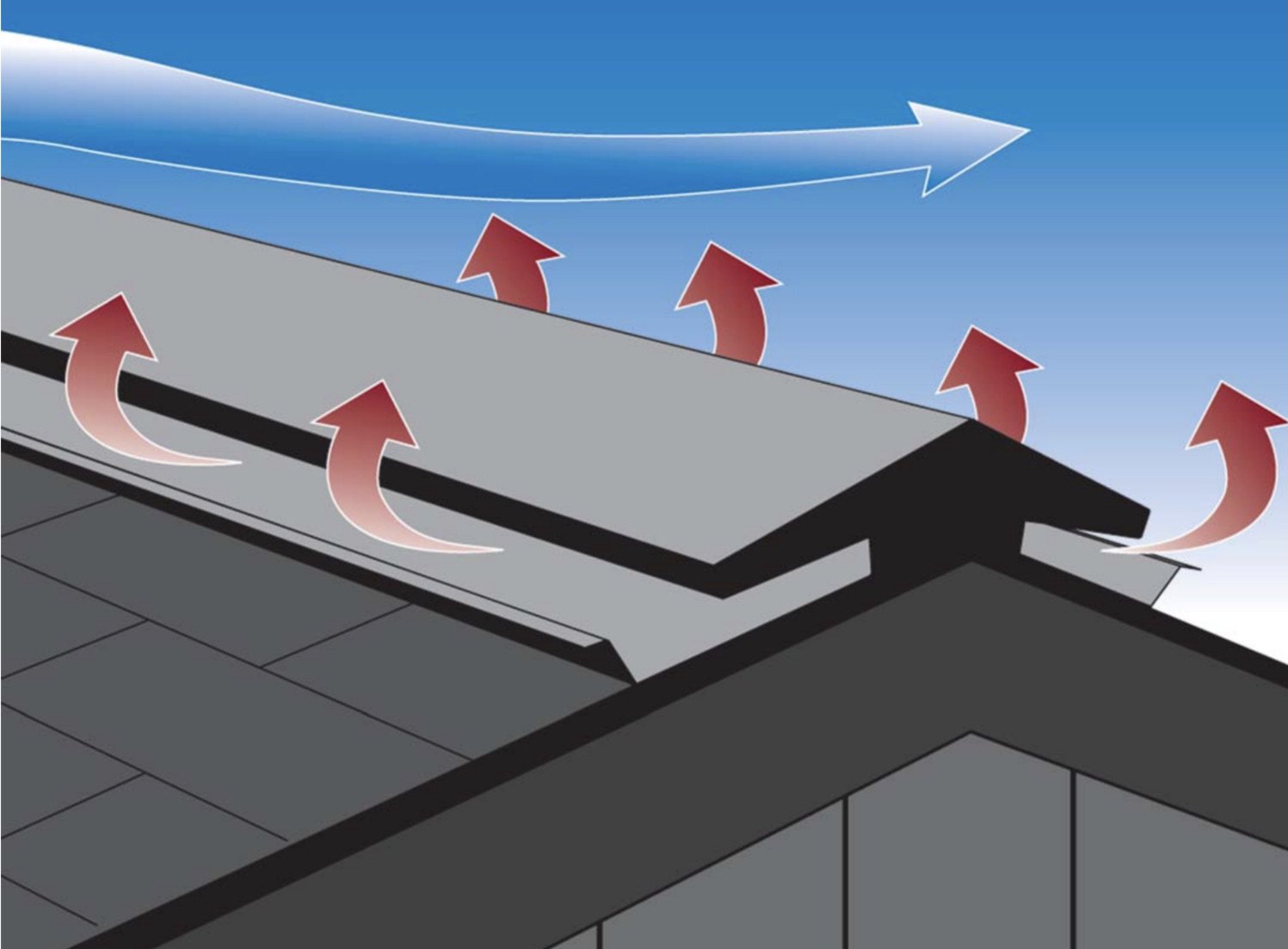Intake vents allow air to flow into your attic without nature’s elements getting in the way. Exhaust vents, then, are designed to let air leave the attic. Together, they create the most efficient system for preserving the quality of your roof.
Ridge vents are the go-to exhaust vents for efficient ventilation for roofs with horizontal peaks, spanning the length of the roof. This type of vent is designed to ensure the even distribution of ventilation for the underside of your roof deck when paired with the right intake vents around the edge of your roof.
Learn more about the types of intake and exhaust vents and other ventilation features for your roof in our article, “A Homeowner’s Guide To Attic Ventilation.”
WHY IS ROOF VENTILATION IMPORTANT?
Correctly installed roof ventilation helps prolong the life of your roof in many ways, including helping to prevent early deterioration of your asphalt shingles. Just a few more benefits are covered here.
Proper roof ventilation helps prevent moisture buildup.
A high-quality roof ventilation system doesn’t give air enough time to become stagnant in your attic. That means no moisture particles will build up around your roof deck, trusses, or rafters. This helps prevent the following from developing in your attic and living area:
Mold and mildew
Wood rot
Wet insulation
Poor air quality
Proper roof ventilation helps prevent ice dams.
If your attic is properly ventilated, your roof is less likely to suffer from uneven freezing and thawing in the winter and early spring in Pennsylvania. Old, outdated, or improperly installed roof ventilation systems can lead to ice dams–a major threat to the wellbeing of your roof. Ice dams can push water up under your roof shingles, which leads to damage to your underlayment and roof deck–two components of your roof that are more difficult to repair.
Proper roof ventilation can help cut back on cooling costs.
Roof vent systems help maintain a steady airflow and prevent heat buildup. In this way, your ventilation system aids in keeping your electric bill reasonable in the summer because it costs less to keep your home cool and comfortable for your loved ones.
WHAT HAPPENS IF MY ROOF ISN’T PROPERLY VENTILATED?
When components of your roof ventilation system are improperly installed–or if your ventilation system is outdated–you as the homeowner could face a host of issues that may lead to otherwise unnecessary expenses.
Damage to your home and ventilation system
Your home’s roof is meant to protect you and your belongings from the elements. But poorly installed roof ventilation components can allow the elements to break through that protection. Snow, ice, and rain could enter your attic and damage the roofing system, your antiques, and other beloved possessions you thought were safe from curious, tiny hands–and the weather. If left unaddressed, your ceilings can suffer water damage. By the time you notice that water damage, you’ll likely have a mold issue in your attic and potentially rotted roof decking, which means replacing your roof a lot sooner than you’d anticipated.
Invalid shingle warranty
Most shingle manufacturers offer warranties with their products. However, not having a ventilation system in place for your attic and roof can cause the warranty to be invalid. That means if a faulty shingle was installed on your roof, or if you’re faced with premature roof shingle deterioration, the manufacturer won’t cover repair costs.
WHEN SHOULD I CHECK MY ROOF VENTILATION SYSTEM?
Consider examining your roof ventilation system when you’re planning to get your roof replaced. Since all roofing materials will be stripped during that process, your ventilation system will be exposed and easy to access. That’s the ideal time to upgrade your system with more efficient ventilation components.
Contact Greenawalt Roofing Company today for a free roofing and roof ventilation estimate.






